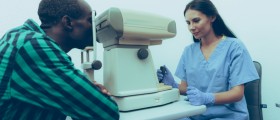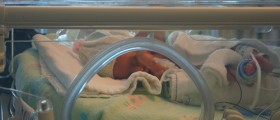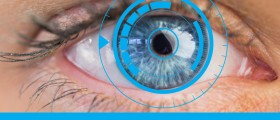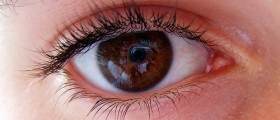
Dangers of Retinopathy
Retinopathy is a disorder of the retina, located in the back of the eye, which is characterized by destruction of the nearby blood vessels. Underlying conditions, such as hypertension or diabetes, are known factors which contribute to the impairment of the retina. Prematurely born babies as well as individuals with anemia and lupus, are also prone to retinal problems. High blood pressure causes obstruction of veins and arteries around retina that after a certain amount of time leads to loss of vision. The effects of diabetes are relatively similar, damaging the blood vessels in both eyes. When the blood vessels around the retina are destroyed they leak lipids and proteins forming deposits that clog vision. Further, the damaged blood vessels are less effective in carrying oxygen, which also has negative effects on vision. When hypertension and diabetes are coupled with smoking the risk of vision impairment is even higher. Diabetes induces retinopathy is the primary cause of blindness in the United States. Loss of vision in diabetic individuals is unavoidable and the longer the person has lived with the disease the worse their vision is. Also, during the later stages of the disorder new blood vessels are formed in the eye but they are weak and in many cases rupture causing the blood to spill all over the eye. Such bleeding leads to scarring of the retina and subsequently to vision problems. In the case of retinopathy induced by high blood pressure, the walls of retina get thicker and narrower so the vision becomes limited.Symptoms of Retinopathy
Individuals suffering from diabetes need to be aware that retinopathy does not yield any signs or symptoms in the beginning but is nevertheless present. As time goes by and the underlying diseases progress, so does retinopathy. Some of the most common symptoms of retinal problems include fluctuating and blurred vision, increased blind spots in vision, double vision, changes in the perception of color and pain. Medical care professionals will also look for micro aneurysms, or pouches of blood that are manifested as red dots covering the retina. Not surprisingly, they are prone to breakage, causing bleeding in the eye and blurred vision. Any kind of bleeding in the eye is known to result in the retina detaching from the back of the eye, which leads to complete blindness. When it comes to the signs and symptoms produced by hypertension, in the early stages they are also nonexistent. In the more advanced stages doubling of vision is likely to occur and so are sudden losses of vision on one or both eyes. Headaches, accompanied by changes in vision, are often present as well.Prevalence and Outlook of Diabetic Retinopathy
In adults under the age of 65, diabetic retinopathy is the leading cause of blindness. When it comes to Type 1 diabetes, approximately 25 percent of individuals are likely to develop diabetic retinopathy five years after the first diabetic symptoms. In the case of Type 2 diabetes, about 25 percent of people who do not require insulin will also have vision related problems within the first five years of the initial development of the disease. Out of those patients who need insulin the percentage of vision impairment is much higher. In addition, if the diabetic retinopathy is detected early and proper kind of treatment is introduced the outlook is usually good. There have been numerous research studies that claim that approximately 90 percent of patients who start therapy early do not suffer critical vision loss.How is Diabetic Retinopathy Diagnosed?
In the United States, there is a national screening program provided by the Department of Health aimed at diagnosing retinopathy in its early stages before it shows any symptoms. Anyone who is 12 years old or over and is suffering from diabetes needs to be screened for retinopathy once a year. The primary medical care provider invites eligible candidates for the annual screening. During the procedure a few eye drops are used in order to enlarge the pupils, and a few snapshots of the retina are taken. There may be some blurring of visions due to the effects of the eye drops that does not last more than 15 to 20 minutes. In general, the screening test does not cause any pain or discomfort. Nonetheless, there are instances in which the eye drops lead to an instant rise in pressure within the eye causing tenderness which usually needs to be medically treated.How is Retinopathy Treated?
Experts agree that retinopathy is best treated by keeping the underlying conditions under control. For instance, when high blood pressure is reduced to normal the damage to the eye is minimal. Similarly, when the level of sugar in the blood is optimal the retinopathy does not progress. On the other hand, the advanced stages of the disease usually require surgery in order to remove the scarring and repair the damaged blood vessels.
















Your thoughts on this
Loading...